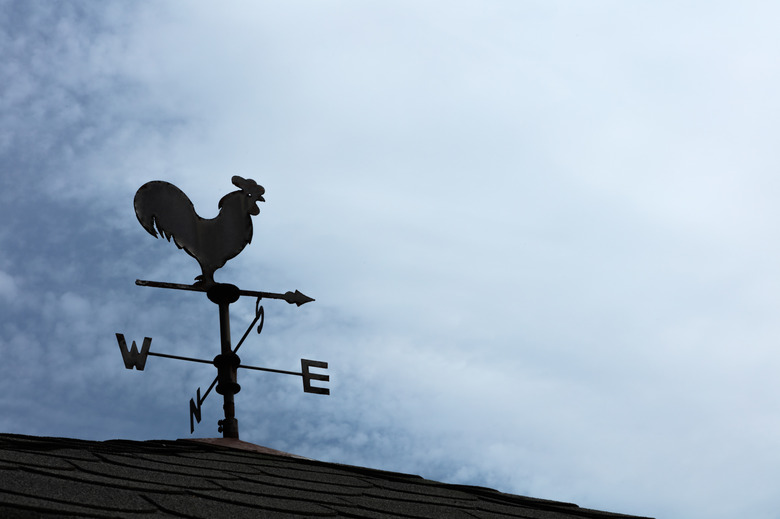The Four Forces That Influence Wind Speed & Wind Direction
Wind is defined as the movement of air in any direction. The speed of wind varies from calm to the very high speeds of hurricanes. Wind is created when air moves from areas of high pressure toward areas where the air pressure is low. Seasonal temperature changes and the Earth's rotation also affect wind speed and direction.
Temperature
Temperature
Air temperature varies between day and night and from season to season due to changes in the heating Earth's atmosphere. Because of the sun's warming effect, there are more winds during the day. Air masses also differ in temperature. A warm front precedes a warm air mass. Warm air is less dense than cold air, so warm air rides up and over the cold air, causing winds. Converselt, a cold front, the leading edge of a cold air mass, also creates wind.
Air Pressure
Air Pressure
Air pressure is the weight of a column of air reaching the top of the atmosphere from the ground. Air pressure decreases with increasing altitude and fluctuates across Earth's surface due to differences in land elevation. At the Earth's surface, wind blows horizontally from high pressure to low pressure areas. The speed is determined by the rate of air pressure change, or gradient, between the two pressure areas. The greater the pressure difference, the faster the winds.
Centripetal Acceleration
Centripetal Acceleration
Centripetal force increases air speed and influences the direction of wind flowing around the center of the circulation. This acceleration creates a force at right angles to the flow of the wind and inward toward the center of the rotation, such as low and high pressure systems. The winds in a low pressure system, called cyclones, blow in a counterclockwise and inward direction in the Northern Hemisphere. Winds in high pressure systems, known as anticyclones, blow in a clockwise and outward direction in the Northern Hemisphere.
Earth's Rotation
Earth's Rotation
The rotation of Earth on its axis causes winds to shift direction, creating what are called the prevailing winds. This wind shift, known as the Coriolis effect, causes winds in the Northern Hemisphere to shift to the right and winds in the Southern Hemisphere to shift to the left. The trade winds, also called easterlies, blow near the equator between 30 degrees north latitude and 30 degrees south latitude. North of the equator, these trade winds blow from the northeast. Conversely, they blow from the southeast south of the equator. The westerlies of the middle latitudes blow from the southwest in the Northern Hemisphere and from the northwest in the Southern Hemisphere. The polar winds prevail in the Arctic and Antarctic, from the latitude of 60 degrees to the poles. These winds blow from the northeast in the Arctic and from the southeast in the Antarctic.
Cite This Article
MLA
Barber, David. "The Four Forces That Influence Wind Speed & Wind Direction" sciencing.com, https://www.sciencing.com/list-7651707-four-wind-speed-wind-direction/. 22 November 2019.
APA
Barber, David. (2019, November 22). The Four Forces That Influence Wind Speed & Wind Direction. sciencing.com. Retrieved from https://www.sciencing.com/list-7651707-four-wind-speed-wind-direction/
Chicago
Barber, David. The Four Forces That Influence Wind Speed & Wind Direction last modified March 24, 2022. https://www.sciencing.com/list-7651707-four-wind-speed-wind-direction/
